
When you think of the famous studios responsible for producing some of the most popular kung fu classics, some names that will likely spring to mind are Golden Harvest, Shaw Brothers, and Cathay, to name but a few. One name that certainly wouldn’t be near the top of anyone’s list, or even on it at all for that matter, is American cable channel HBO. However at the end of 2016, the networks Asian channel, suitably titled HBO Asia, announced they’d be airing a pair of new, exclusively made for HBO, kung fu movies. Both would focus on famous characters from Chinese history, ones that should need no introduction for fans of kung fu cinema. Master of the Shadowless Kick: Wong Kei-Ying tells a tale of Wong Fei-Hung’s father, and his battles to rid China of opium, while Master of the Drunken Fist: Beggar So, tells the origin story of the legendary Drunken Master.
While neither tales are likely to break any new ground when it comes to kung fu movie storytelling, the decision for HBO Asia to make these movies at all most definitely is a ground breaking one. Naturally, the biggest question of all is – why? It’s no secret that China’s burgeoning middle class has boomed over the last 10 years, and with it, going to the cinema has come to be one of the countries favourite past times (often regardless of the movie in questions quality). In 2015 alone, China saw 22 new cinema screens opening daily. Daily! While the US continues to wrestle with rampant piracy of new movies, the willingness of Chinese audiences to visit the cinema, combined with a potential box office from a population of over 1 billion, has seen the Hollywood studios keen to ensure their productions have China-appeal.
However as much of a no-brainer as it is, making a movie that can be shown in China isn’t quite as simple as it sounds, with production companies using an increasing number of workarounds to ensure distribution. The most obvious one – China’s quota for foreign productions which can be shown, has largely been circumnavigated by Hollywood making its movies as Chinese co-productions. Throw in some China-specific content, and you’re good to be screened. Now you know why China saved the day in The Martian, and the reason behind the jaunt to Hong Kong in Transformers: Age of Extinction. Remember at the beginning of Looper how Joseph Gordon-Levitt is determined to move to Paris, but then the script simply drops it and has him re-locate to Shanghai instead? That’s because the productions Hollywood budget didn’t stretch to a shoot in France, so the Chinese co-producer stepped in and offered to pay for location shooting in Shanghai. A few script adjustments later, and China saves the day.
Then you have the culturally (or more specifically, politically) sensitive issues to be mindful of. There were mass accusations of white-washing, when the Tibetan mystic from the Doctor Strange comics was changed to a Celtic woman (played by Tilda Swinton), for the movie. But really, look closer, and it’s easy to see that there was no way a production with a main character that’s both Tibetan, and a practitioner of the supernatural, would be shown on Chinese shores. With that much box office at stake, again, the decision to change things was a no-brainer. However, with a president that’s implemented a renewed push to make the Communist Party relevant again, Hollywood’s rush to please China could be about to come undone. In 2016 alone, in addition to the existing bans on such themes as the supernatural, now time travel, one-night stands, and even cleavage have been given the chop from being shown. Had Looper been made now, I guess there’d be no Chinese producers to step in.
In August of the same year, the national media regulator warned local news programs not to “express overt admiration for Western lifestyles”, and authorities have been actively discouraging broadcasters from adopting imported TV formats, such as The Voice of China. Throw in the governments closing down of both Walt Disney Co.’s movie streaming service and Apple’s, and it seems that the noose is tightening on Hollywood’s attempts to drink from China’s cash coated well. This background of course, makes it all the more interesting for HBO Asia to dip its toes into Chinese waters at such a time. While this may be the first time for the channel to deal specifically with the Chinese market, it’s not the first time they’ve dabbled in the Asian market, with their 2012 production Dead Mine aiming to capitalise on appealing to a pan-Asian demographic.
https://www.youtube.com/watch?v=2-dgQPM8JmI
The movie, which starred Japanese actress Miki Mizuno, well known for her roles in the likes of the Hard Revenge Milly series and Sono Sion’s Guilty of Romance, and a fresh from starring in The Raid: Redemption Joe Taslim, was a complete bomb. Shot in English, the Indonesian productions attempt to throw Japanese, Indonesian, and Western actors together, for a tale of undead Samurai warriors in an abandoned Japanese bunker from World War II, simply didn’t mesh together. Undeterred however, HBO continued on with the Australia-Singapore co-produced TV series Serangoon Road, a 1960’s noir detective series set in Singapore and starring Joan Chen. Again, the series was shot entirely in English, and again, it bombed.
After a double-whammy of flops, HBO Asia Chief Executive Jonathan Spink readily acknowledged that, co-productions made with the intent of pleasing two completely different markets, simply don’t work. So it was time for a change of tactics, if it wasn’t possible to gain viewership by appealing to several different countries with one product, what country was capable of providing a high level of viewership as a single entity? Of course, the answer was simple – China. While HBO Asia is not widely heard of in China, let alone available (it’s mostly limited to high end hotels), the network revealed an ace up its sleeve by partnering with the China Movie Channel, which is, most significantly, a division of state broadcaster China Central Television (CCTV). What that means for the average Chinese TV viewer is that they don’t need HBO Asia, as CCTV will handle local distribution, while HBO Asia can concentrate on marketing both movies across the rest of Asia.
The greater advantage for HBO Asia is that, by partnering with a state-run TV channel, anything they make has essentially already been given the stamp of approval for being shown before the cameras even start rolling. It’s a smart move for both HBO Asia and CCTV, and not the first time the pair have worked together. In the past CCTV has licensed and aired HBO TV movies, such as The Gathering Storm, however this is the first time that they’ve come together to co-produce content. With CCTV’s domestic audience of more than 1 billion, and HBO Asia’s presence across Asia, their partnership has the potential to be a powerful one. For HBO Asia specifically, the fact that CCTV is a state-run entity puts them in a strong position to stay on the good side of the Chinese authorities, and position themselves as distributors of Chinese culture to the world.
The impact of Master of the Shadowless Kick: Wong Tei-Ying and Master of the Drunken Fist: Beggar So has already exceeded the expectations of both HBO Asia and CCTV. Speaking in August 2016, senior vice president of new business at HBO Asia, Beibei Fan, had stated there were no plans to show the movies outside of HBO Asia, indicating that the Chinese audience figures alone were enough to justify making them. However as of January 2017, both became available in the US via iTunes and the usual platforms, thanks mainly to a small but dedicated western fan base of kung fu movies who had gotten wind of the productions, and began increasingly asking how they could be seen. Ironically, most of the interest from western shores focused on the involvement of veteran choreographer Corey Yuen, the director of the likes of Ninja in the Dragon’s Den and Yes, Madam! However Yuen’s involvement was only limited to that of executive producer.
Of course like any good marketing department knows, that didn’t stop the promotional posters made for a US audience plastering on top of them – ‘Executive Producer Corey Yuen (X-Men, Lethal Weapon 4 and The Expendables)’ – in a bid to draw in more viewers. Indeed the choice of movies from Yuen’s extensive filmography are indicative of just that, with HBO clearly aiming to draw in not only kung fu fans, but also more casual viewers with references to big budget Hollywood action movies and superhero flicks. Amusingly, it is perhaps the first time a production has referenced Lethal Weapon 4 as a selling point since the 2001 Billy Zane vehicle Invincible, which was, ironically, also a TV movie. Fifteen years prior, the long forgotten cash-in on The Matrix came with the proud tagline of – ‘Executive Produced by Mel Gibson And Jet Li’ – which, if I’m not mistaken, is not even grammatically correct.
The actual man in the director’s chair for both productions is Guo Jian-Yong, a former stuntman and action director in his own right. Yuen and Jian-Yong are well acquainted, with Jian-Yong playing a part in Yuen’s Mahjong Dragon as far back as 1997, as well as action directing on Yuen’s post-millennium efforts such as So Close and DOA: Dead or Alive. Jian-Yong seems well aware of his role as the man responsible for ensuring the movies deliver, with plans already announced that if they’re well received, HBO and CCTV would consider making further instalments. Beibei Fan explained that the approach for both productions was to look at them “almost like pilots”, with Spink further elaborating that the plan is not to be another US studio or network trying to fit into China, but rather the goal “is about taking great content out of China.”
Jian-Yong echoes Spink’s words in particular, explaining that “We have the endorsement of the HBO brand, but it has to be authentic Chinese if it’s going to work, it can’t be half-Western and half-Chinese or audiences will be confused.” True to his word, Jian-Yong has filled both movies with genuine martial artists and stunt performers, with likely the most recognizable face for most kung fu fans coming in the form of Chen Zhi-Hui. The only actor to be given prominent roles in both movies, Zhi-Hui can be recognized for his roles in the likes of Fearless, Ip Man, and Rise of the Legend, usually playing authoritative older figures or masters. This should come as good news to kung fu fans, as while most genres would frown upon made for TV fare, the kung fu genre has had as much action unfold on the small screen as it has the big, with the likes of channels such as TVB producing a large number of martial arts themed serials.
With both productions weighing in at a lean 90 minutes, I decided to watched them back to back, which after the flip of a coin saw Master of the Drunken Fist: Beggar So being viewed first, and Master of the Shadowless Kick: Wong Kei-Ying second. It’s the latter movie that caught my attention the most though, as while the plot of ridding China of opium has been covered countless times before, Wong Fei-Hung’s father Wong Kei-Ying has had surprisingly few screen appearances as a main character. Usually taking a back seat to his sons adventures, Kei-Ying has been notably played by Kong Yeung (Challenge of the Masters), Lam Kau (Drunken Master), Ti Lung (Drunken Master 2), and even Adam Cheng (Drunken Master 3). However as far as headlining a movie, the only time that springs to mind is when Donnie Yen stepped into his shoes for Yuen Woo-Ping’s 1993 classic Iron Monkey.
This time around, he’s played by newcomer Sun Hao-Ran. Master of the Shadowless Kick: Wong Kei-Ying is, as expected, far from ground-breaking, however what it does do is deliver a solid little kung fu movie, regardless of if it’ll likely be forgotten soon after watching. Hao-Ran is a capable lead, and in much the same way as when Jet Li played Wong Fei-Hung in the Once Upon a Time in China series, all he’s really called upon to do is to act suitably stoic and upstanding. What counts is that he does it well, and clearly has the moves to back it up. It’s easy to recall Fan’s words of how the productions should be treated as pilots when watching, however Jian-Yong looks to have made the most of the limited budget he was given to work with.
While the fights come frequently, there’s also a surprisingly high level of violence on display, including a decapitated arm, and a throat being cut with a Chang Cheh level of blood splatter. These, and several other instances of bloodletting, play their part to ensure proceedings never feel too much like, well, a HBO TV movie. Jian-Yong also seems to be a fan of old school kung fu movies himself, with the villains Peking opera mask an obvious nod to The Five Venoms, and the revelation that an old master has stitched a secret kung fu manual under his skin (and the subsequent gory procedure to remove it) recalling a similar scene in Shaolin: The Blood Mission.
The fights themselves are well paced, and flow at a nice speed with no signs of undercranking, although purists will no doubt bawk at some of the wire assisted moves. The finale in particular sees inspiration being drawn from Fearless, as Hao-ran has to face off against a Muay Thai fighter, a fencer, and the villain himself. What makes the fights work so well is what’s at stake, with Hao-ran’s acquaintance, aunt, and son (Wong Fei-Hung himself, who does nothing but whine incessantly for the whole movie) all captured by the villains. During the round with the Muay Thai fighter, for each of Hao-ran’s limbs that touches the ground, the corresponding limb of his tied up acquaintance is broken. During the round with the fencer, for every part of Hao-ran’s clothing that gets sliced, the corresponding piece is ripped off from his aunt, resulting in a kind of bizarre game of strip kung fu.
The setup results in a welcome sense of immediacy, and perhaps thanks to the grittier and more bloody version of Wong Fei-Hung that was recently presented in 2014’s Rise of the Legend, the fights finish on a suitably brutal note. It surprises me that I actually enjoyed Master of the Shadowless Kick: Wong Kei-Ying more than I did Rise of the Legend, despite, in terms of production values at least, Roy Chow’s movie being superior in every way. In an attempt to make Wong Fei-Hung relevant for a modern audience though, for me Rise of the Legend sacrificed too much of what makes Wong Fei-Hung the enduring character that he is, and perhaps more specifically, what he stands for. Here there’s a balance, with Wong Kei-Ying still being the impeccably upright character we know Wong Fei-Hung will become, but when it comes to facing off against the bad guys, he also knows when it’s time to show no mercy.
It’s interesting then, that the elements that make Master of the Shadowless Kick: Wong Kei-Ying work, are somehow almost entirely absent from Master of the Drunken Fist: Beggar So. As a movie, it seems to be aware of how easily it could stand in the shadow of 2010’s True Legend, however does nothing to differentiate itself from such inevitable comparisons. The titular character of Beggar So, a character played by everyone from Simon Yuen to Donnie Yen to Vincent Zhao, here has his shoes (or should that be bottle of wine?) filled by another newcomer in the form of Jun Cao. However Jian-Yong seems to struggle to do anything beyond creating a simpler, less ambitious, retelling of Beggar So’s origins, compared to what audiences have already seen in True Legend.
The long hair and spinning on your back breakdancing move are both present and accounted for, however instead of battling Gordon Liu and Jay Chou on a mountain in an alcohol fuelled dream, Cao has an outer-body experience (after being hit by lightning), and drunkenly staggers around with CGI water drops. It all seems very derivative of what we’ve seen before, only on a smaller budget and with more pedestrian direction. Short of simply writing off Master of the Drunken Fist: Beggar So as a poor man’s version of True Legend, the production also has plenty of its own issues to contend with. While the TV format sees a much less devastating event than his family’s death lead to Cao’s inebriated state, the aftermath, and lack of any interesting supporting characters, sees a disproportionate amount of the run time dedicated to watching him wallow in his own misery.
This is likely due more to the script and direction than Cao’s performance, who at times resembles the spitting image of a Story of Ricky era Fan Siu-Wong, however that doesn’t make it any more tolerable to sit through. The training sequences also feel like a miss, as despite being surrounded by several props, apart from a brief scene of balancing on bamboo poles, Cao’s entire regime seems to consist of staggering around in an open space performing drunken boxing. Training scenes are a grand tradition in any old school kung fu movie, and allow the action directors to get creative regardless of how little the budget they’re working with is. So to see none of the props in plain sight get utilised, in favour of endless scenes of drunken forms, seems like a missed opportunity.
While Cao does eventually get to use his drunken boxing skills against an evil eunuch, it all comes a little too late, and ultimately feels underwhelming. The fight scenes in Master of the Shadowless Kick: Wong Kei-Ying may not be a significant improvement, however they come at frequent intervals, which allows proceedings to maintain a steady pace and keep the viewers interest. That sense of pacing isn’t there with Master of the Drunken Fist: Beggar So, with far too much time spent with a character, who most will already be family with, feeling sorry for himself, and not enough on the business of people beating each other up.
https://www.youtube.com/watch?v=l8Rm5_N-f8g
The contrast in both movies, despite them being unmistakably made for TV, is a noticeable one – with Master of the Shadowless Kick: Wong Kei-Ying being an example of how to keep a TV movie interesting, despite an unremarkable story and archetypal characters, and Master of the Drunken Fist: Beggar So suffering all the pit falls that one would expect from such a production. For western audiences in particular, it’s difficult to imagine coughing up the money for both features if Master of the Drunken Fist: Beggar So is the one chosen to be watched first. Back over in Asia however, as Beibei Fan pointed out, the viewers in China alone, who can watch them for free, are more than enough to justify the cost of making them, so the western market is really just an afterthought.
Most likely HBO Asia’s decision to appeal specifically to the Chinese market is something we’ll be seeing more and more of in future. When Jackie Chan picked up his honorary Oscar in November 2016, he recalled that when he first went to Hollywood to make Battlecreek Brawl, nobody cared for his opinions or wanted to listen to his ideas. But he went on to explain that “Today, they ask me what Chinese people like to see. They need to consider every aspect of China because China has gotten strong, and China’s film industry has gotten strong.” While not everyone may agree, it’s arguably true, and if that means that HBO get to make more kung fu movies on a higher budget and with more time to film, then it’s definitely not a bad thing. Maybe a few years from now we’ll have Master of the Chain Punch: Ip Man and Master of the Iron Skin Technique: Fong Sai-Yuk.
Time will tell, but until then, it’ll be interesting to see if other networks decide to follow the same route of abandoning appeal-to-all co-productions, and instead choose to focus specifically on the Chinese audience. Netflix already abandoned its attempts to launch in China at the end of 2016, due to the government regulations over foreign digital content simply being too strict to overcome, so it seems like a very real possibility. However not every filmmaker is as enthusiastic about working under such restrictive conditions, a sentiment reflected in comments made by Troma Entertainment President Lloyd Kaufman, during a panel discussion held during the Chinese American Film Festival last year. “How are you going to learn from American producers if we have to conform to a system controlled by bureaucrats from the top down?” said Kaufman, indicating that we’re likely not going to get a Chinese version of The Toxic Avenger anytime soon.
Whatever the future may hold, HBO will be remembered as the first network to boldly branch out into Chinese territories, and there are certainly far worse ways to do so than with a couple of kung fu movies. Jian-Yong himself seems to understand the universal appeal of the genre, insisting that he wanted all of the action and stunts to be performed by the actors with no CGI or special effects, adding that “audiences across all cultures can appreciate that.” Indeed, I doubt there’ll be many people reading this article who’d disagree.
Updates: Making good on their promise to produce more kung fu, it’s been reported that the vice president of the China Movie Channel, Zhang Ling, has confirmed they’ll be making 2 more movies with HBO.
Speaking with The Hollywood Reporter shortly before the China Night Party took place as part of the Cannes Film Festival, Ling had this to say – “We were very pleased with how our first collaboration turned out, so we are very happy to be partnering with HBO on two more high-quality TV movies that celebrate Chinese culture and history.” While no further details were provided, based on Beibei Fan’s comments from 2016, expectations are that once again each movie will be a stand-alone story of a martial arts hero from Chinese history.
As we hear more, we’ll be sure to keep you updated!

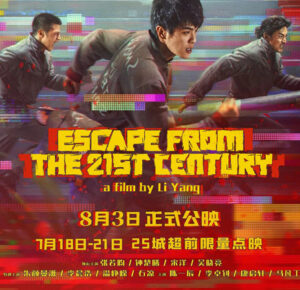
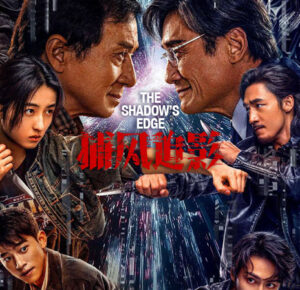
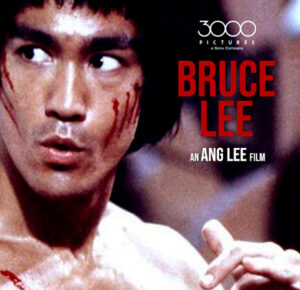

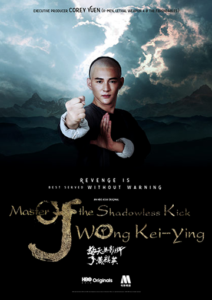
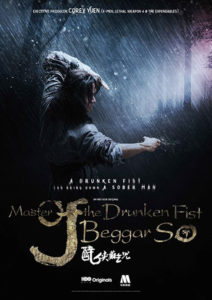


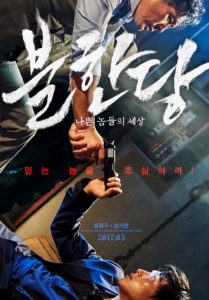
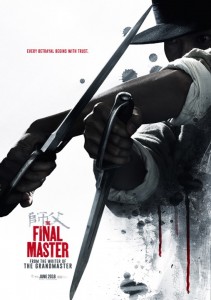

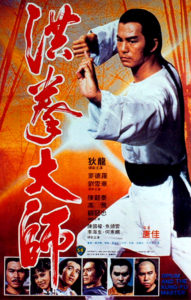

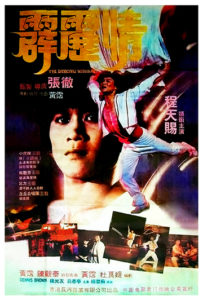

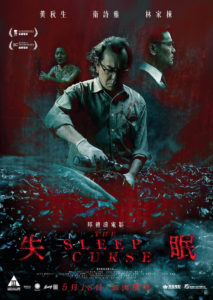

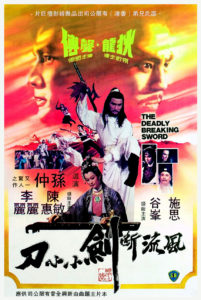

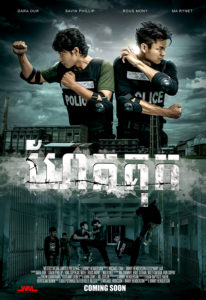
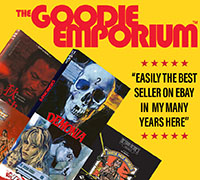

4 Comments